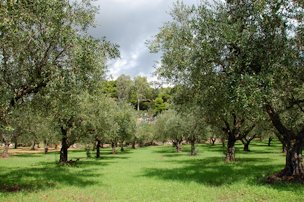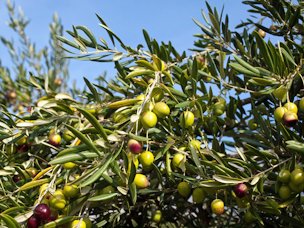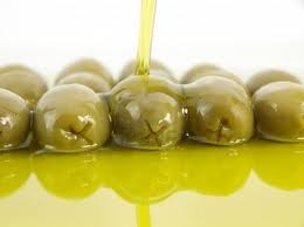Article from
VSCNews, Vegetable and Specialty Crop News
by Bill Lambert
Olives in Florida?

Could olives be the next big thing for citrus producers? The Hardee
County Industrial Development Authority (HCIDA) has started a new
venture to facilitate diversity in agriculture production in light of
citrus greening. HCIDA has a 264-acre tract of land, with a majority of
acreage set aside for industrial development, called Commerce Park. It
houses manufacturing companies, including many agricultural entities,
like a Keyplex manufacturing plant and a Howard Fertilizer distribution
point. On the surplus land that is not being used by the industrial
park, the Hardee Economic Council has decided to try to assist
agriculture partners and economic development in the community.

The
council has begun efforts by putting up demonstration test plots of a
variety of plants. It wants to present various options for citrus
growers to diversify their agricultural portfolios and provide
complementary information to the research being done at the University
of Florida. The council chose to primarily grow olives and has
planted around 1,200 olive trees of 18 commonly grown varieties. Along
with olives, it has planted eight different varieties of pomegranates,
hop cultivars developed in Florida, and Pongamia pinnata. Pongamia
pinnata is commonly used as a cattle feed for its high protein content,
but has also been found to have oils with insecticidal and fungicidal
properties.
A large variety of cultivars have been planted, but
the main concentration is olives. Bill Lambert, director of economic
development in Hardee County, says that there should be no issue with
growing olives in Florida with proper management of nutritional
programs to enable the plants to flower and fruit.

The whole purpose behind this project is to give various options to
growers to enhance and diversify their agriculture portfolio. The
council is using a grower’s mentality to produce the olives, with the
objective being to study practical aspects of production. This includes
cost of production converted to cash flow to provide growers with an
idea of what their return on investment would be. There is a large
market for olives worldwide, including the United States, where almost
98 percent of olive oil is imported. This offers a great opportunity
for production in the United States, for not only olive oil, but for
gourmet and table olives.
Olive plants can grow in Florida, and
now it is time to test their production abilities in the state. The
idea is that olives will be a major complement to citrus producers. “It
never hurts to diversify. It is just not good to have all your eggs in
one basket,” concludes Lambert.
|
|


